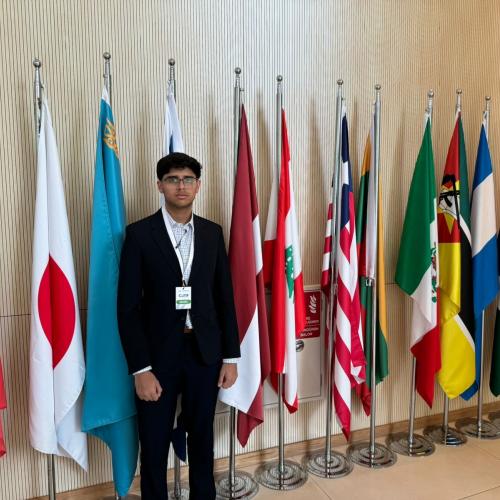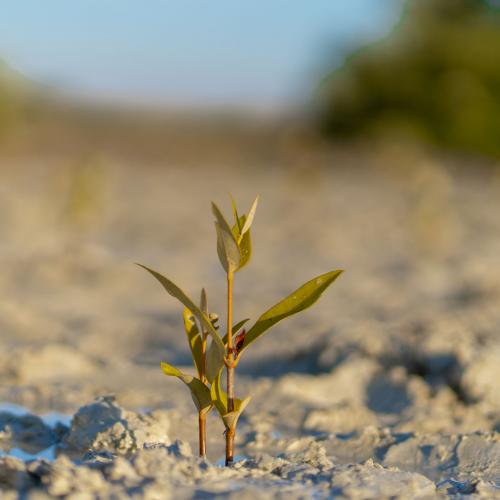Leaders of Change make an exciting discovery in Wadi Wurayah National Park
On a recent Nature at Night field trip, our group of volunteers spotted an Orthochirus scorpion that is new to Wadi Wurayah – and possibly to science!
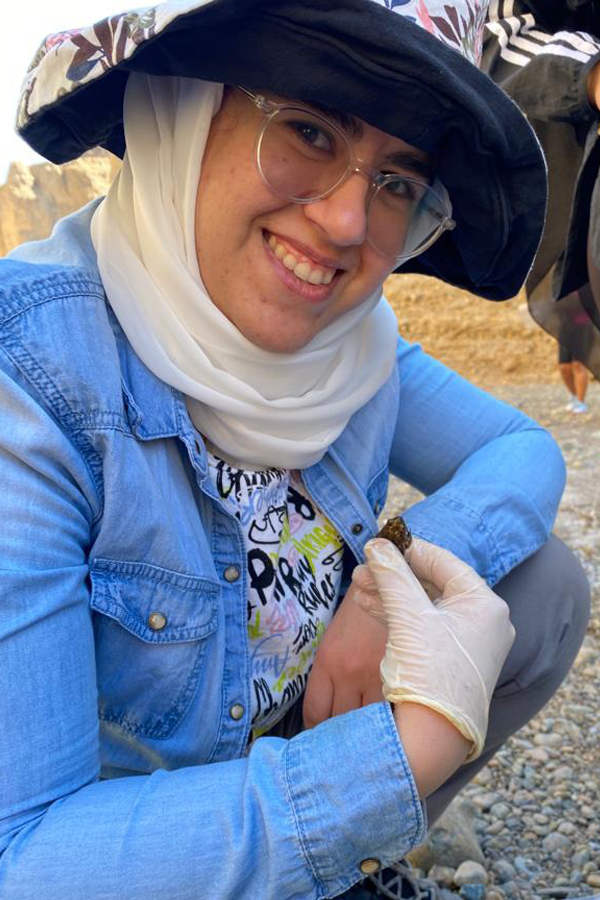
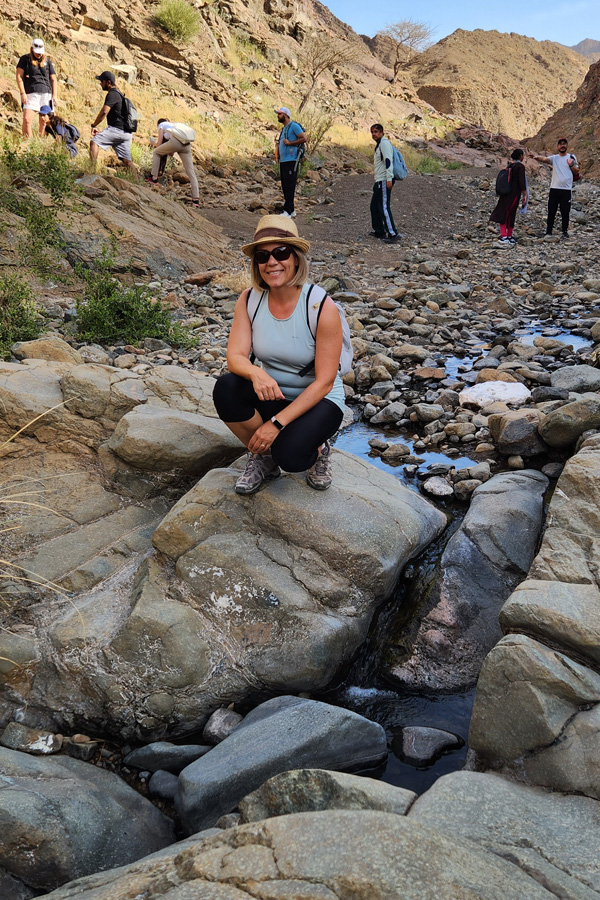
Areej Jaradat (left) and Emilie Rebert (right)
We spoke to Leaders of Change Emilie Rebert and Areej Jaradat to find out how this amazing encounter came to be.
Armed with a list of species to look for, UV lights and other equipment, a group of about 20 volunteers proceeded into Wadi Wurayah National Park, tucked away in the Hajar Mountains in the emirate of Fujairah. They would support Nature at Night, an event organized as part of Emirates Nature-WWF’s Leaders of Change programme, which empowers people to volunteer for nature and contribute to citizen science.
They weren’t sure what to expect from the excursion. Some were keen to take a break from hectic work lives. Some were curious about the desert landscape. All shared a passion for nature and were excited to enter the UNESCO Biosphere Reserve at night, under the guidance of biodiversity manager Nasser Obeidat from the Fujairah Environment Authority and wildlife expert Dr. Andrew Gardner from Emirates Nature-WWF.
The sun had just set an hour ago. Under the cover of darkness, UAE’s nocturnal inhabitants began to emerge from their slumber.
For three hours, our Leaders of Change would explore the protected nature reserve, surveying the area for scorpions, identifying bats and listening for owls. The data they collected would help answer real questions, are populations growing? Are current conservation strategies helping species thrive?
One of our volunteers, Emilie Rebert, was especially keen to see some of the UAE’s notorious scorpions. The nocturnal arachnid had proven elusive in the previous Nature at Night trip to Al Qudra lake Dubai. She had come across beetles, lizards and insects – but no scorpions! Little did she know, luck was entirely on her side this time.
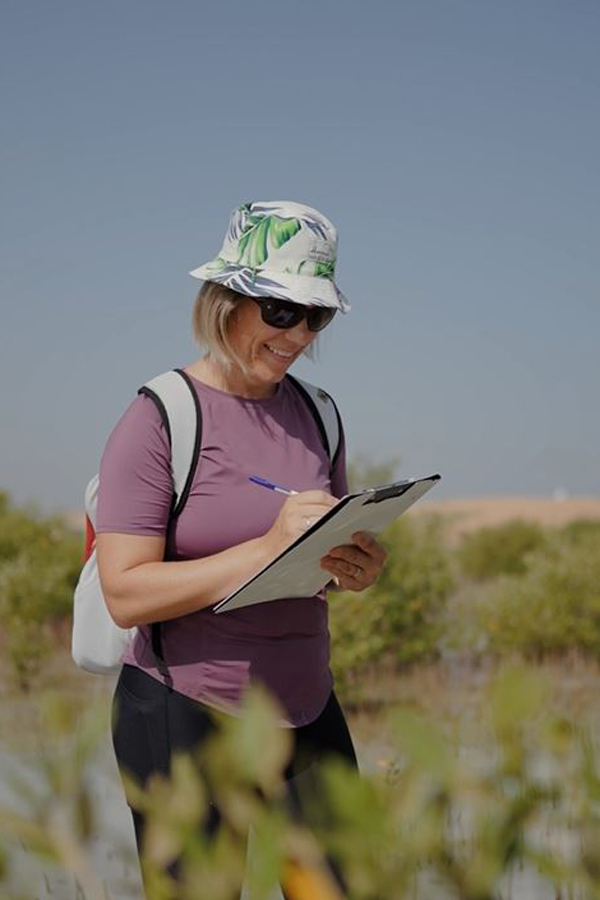
Emilie Rebert at a recent Leaders of Change event in Umm Al Quwain
A trained Climate Fresk facilitator who has already participated in numerous Leaders of Change trainings and field trips, Emilie was looking forward to great time connecting with nature with like-minded people. When she noticed the reserve manager packing forceps and small boxes before their journey into Wadi Wurayah, she felt they were on the right track. It was her first time visiting the mountainous area which is home to over 1,100 species: rare and endangered reptiles, planets, insects, mammals and birds.
In a short period of time, the group spotted the first scorpion glowing under the UV lights. Then another and soon they were surrounded by tens, maybe fifty scorpions.
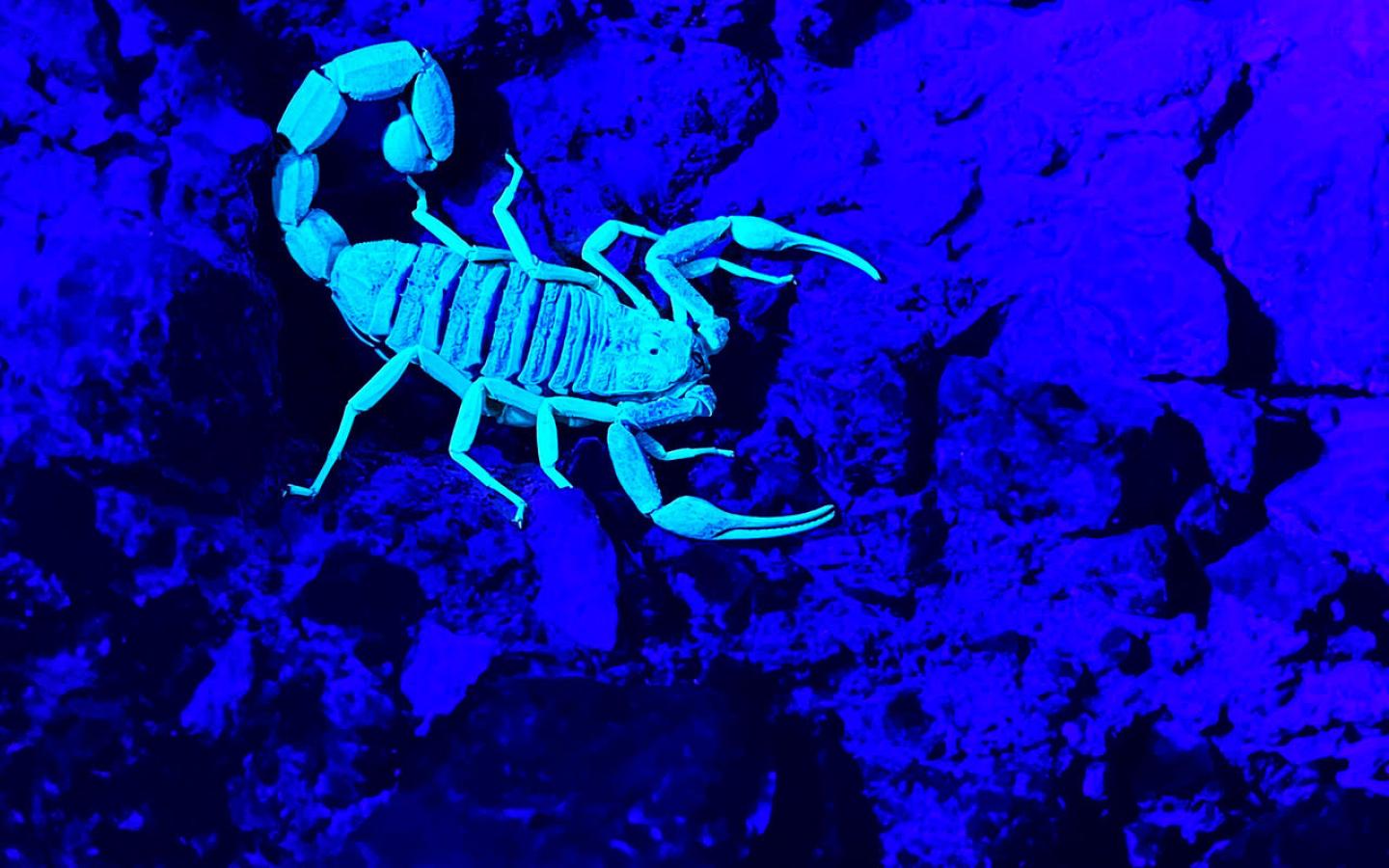
Hottentotta jayakari, the black-tailed alligatorback scorpion under UV light
“I was surprised by the quantity of scorpions and the easiness to find them. The UV lights are doing magic: scorpions simply stand out in the dark. As they are not moving much, you can really observe them,” Emilie shared excitedly.
“Each time one of us finds a scorpion, we try to identify it with our 1-page guide. We saw many scorpions that night and were able to identify them. We were seeing many black-tailed alligatorback scorpions. But one of them was difficult to identify, and we had to call Drew, our biologist. He was himself hesitant but after a couple of minutes of observation, he found out that this was another species, that had never been recorded in Wadi Wurayah!”
Dr. Andrew Gardner, who is the Associate Director of Biodiversity Conservation at Emirates Nature-WWF explained, “The scorpion species we found at Wadi Wurayah is in the genus Orthochirus. However, there are several very similar species and exact identification would require examining specimens microscopically to note the number and position of trichobuthria, amongst other characters. In general Arabian species are often lumped as O. innesi but this is likely to be a group of different species.”
“A new species was recently described from Saudi called O. katerinae, while O. glabifrons is known from Oman. So it could be one of these. … or something totally new.”
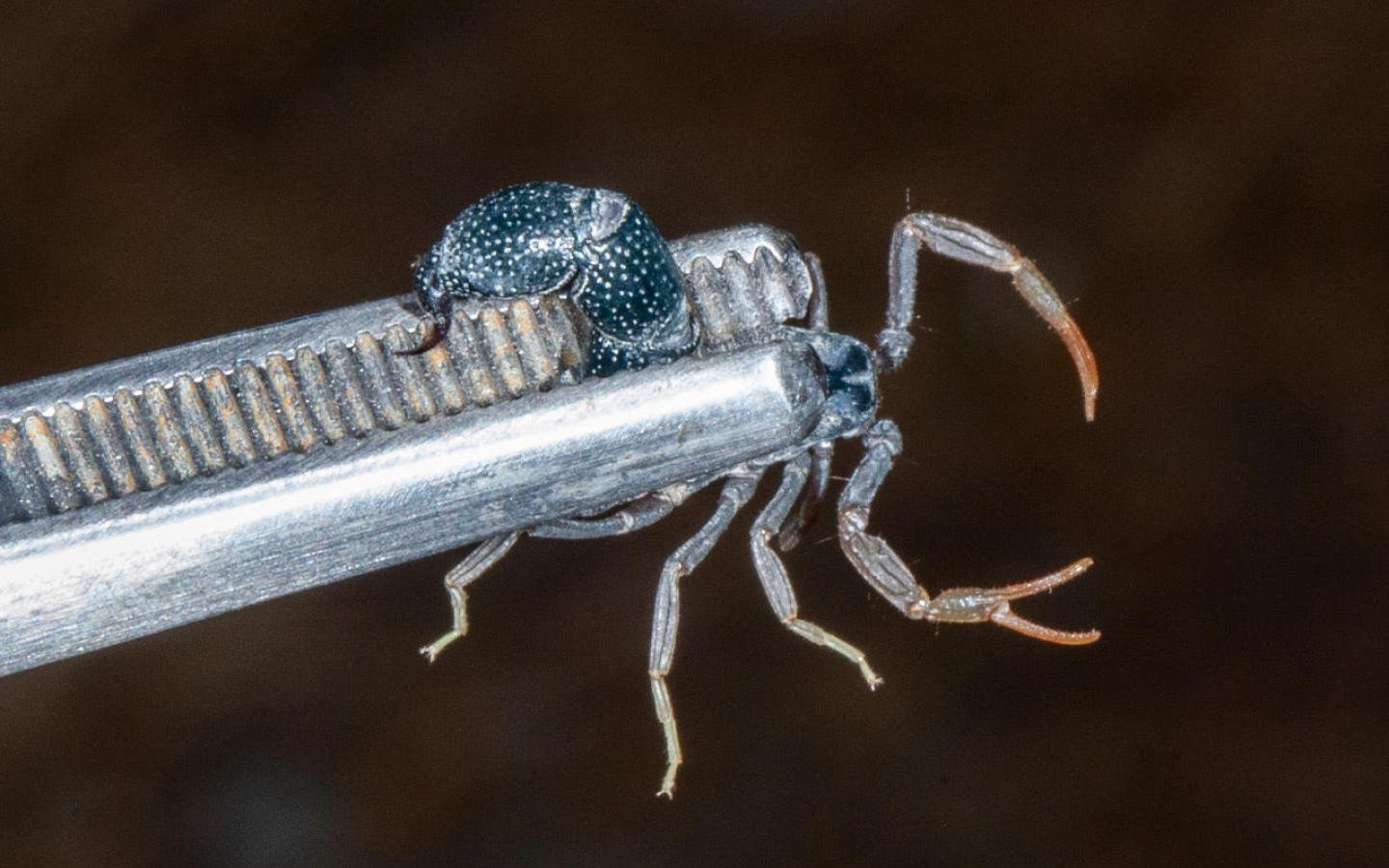
The newly spotted Orthochirus scorpion
Scorpions serve as ecosystem indicators. They are very sensitive to changes in the environment so their presence or absence provides a deeper understanding of the overall health and diversity of the ecosystem.
Orthochirus are small black scorpions that have rounded tail segments with pitted exoskeleton. They tend to hold the tail close over the body, and the tail is quite short and fat. There is another very similar genus called Orthochiroides, but they don’t occur in Arabia.
We also spoke to Areej Jaradat, a researcher at United Arab Emirates University who is well versed in environmental biology. With degrees in environmental science and great passion for nature, Areej has attended numerous lectures and activities in Dubai, Fujairah and all over the UAE. Yet, the chance encounter at Wadi Wurayah surpassed all her expectations.
“We are not always lucky to encounter species on these trips,” Areej remarked. “It was fascinating to find what seems to be a new species, and even more amazing to be involved in this discovery.
“This experience made me appreciate all the hard work we put into to preserving the environment. It has validated these efforts and gives me even more motivation to keep at it.”
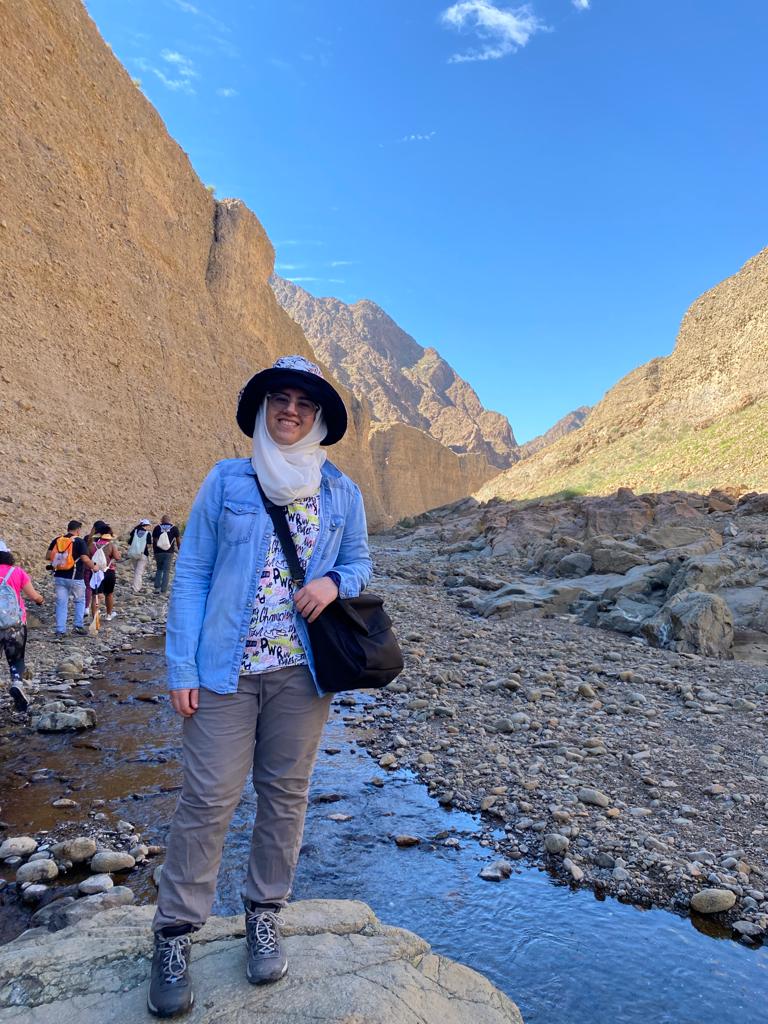
Areej Jaradat exploring the UAE’s unique landscapes
Areej looks forward to introducing more people to nature in the UAE. “Nature is amazing for everyone,” she says as she fondly remembers introducing her city dwelling friends to similar activities. “Try it the first time, you’ll love it.”
Emilie shares a similar sentiment and spoke of the importance of restoring ecosystems, ”The easiest way to convince someone to take care of nature is not to tell them, but to take them in nature. Let them discover this beauty and realize that everything works in harmony, without the intervention of humans. Nature doesn’t need us. We need it.”
When asked about the next Leaders of Change activity she plans to join, Emilie confidently replied she’d love to see turtles and might take some friends with her.
Areej spoke of joining the annual survey of the Arabian Collared Kingfisher in Kalba and her hopes of returning to Wadi Wurayah, “We might find something else, another new species!”
Subscribe to our blog for more stories about the inspiring people who are volunteering for nature. To join the movement or learn more visit leadersofchange.ae

